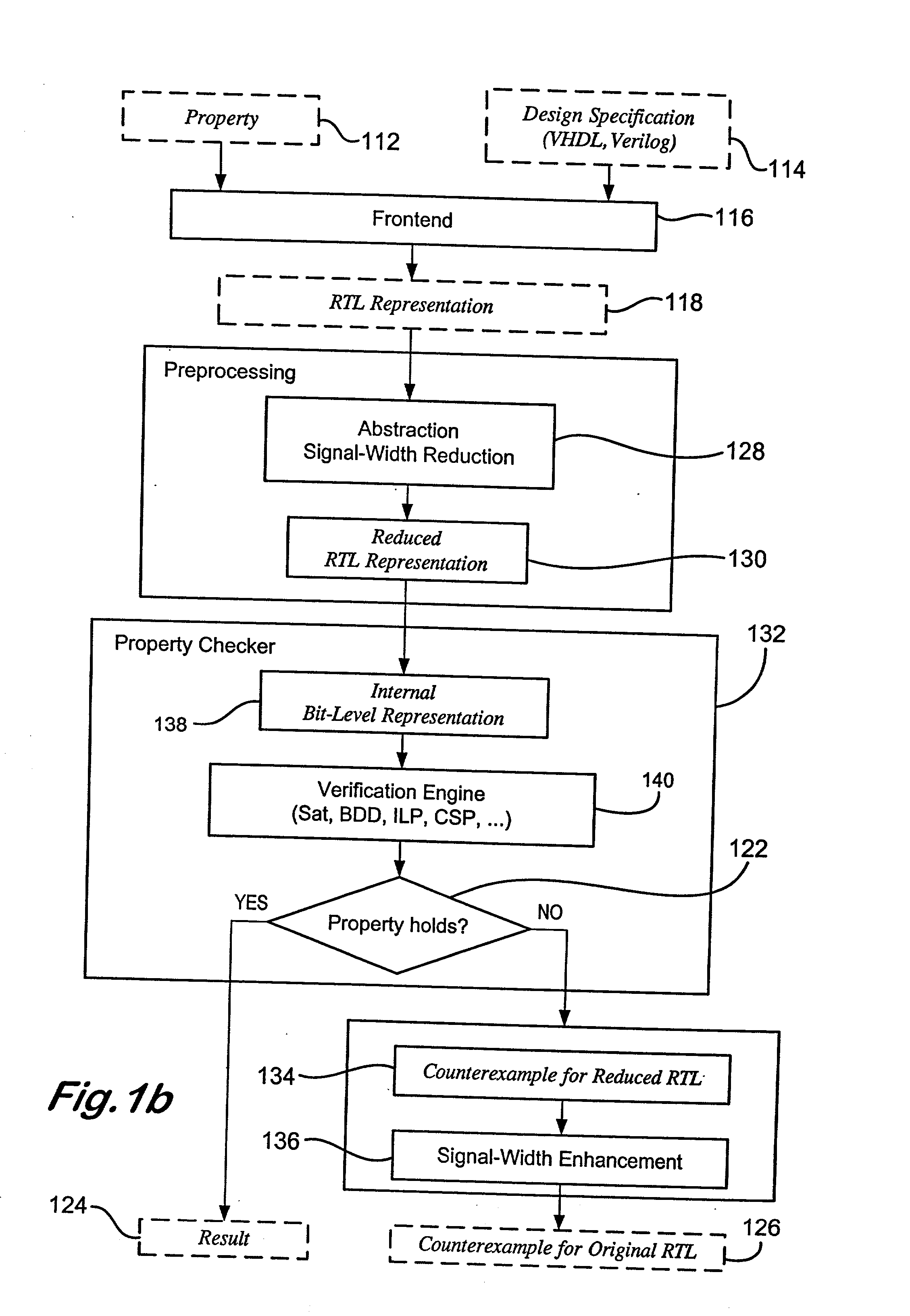Method of circuit verification in digital design
a digital circuit and verification method technology, applied in the field of digital circuit design verification method, can solve the problems of increasing the complexity of the verification tool, affecting the operation of many eda tools, time-consuming and expensive, etc., and achieve the effect of reducing the model and original design
- Summary
- Abstract
- Description
- Claims
- Application Information
AI Technical Summary
Benefits of technology
Problems solved by technology
Method used
Image
Examples
example 10
[0125] Let x.sub.[8], y.sub.[16], z.sub.[16] be bitvector variables and assume that E contains the following equation:
x.sub.[8]=(y.sub.[16] and z.sub.[16])[15,8] (8)
[0126] Assume that granularity analysis and minimum width abstraction yield the following results:
C.sub.1={. . . , x.sub.[8],y.sub.[16],z.sub.[16]<-;15,8>, . . . }; .phi.(C.sub.i)=2
C.sub.i+1={. . . , y.sub.[16], z.sub.[16], . . . }; .phi.(C.sub.i+1)=3
[0127] The granularity of y.sub.[16], for example, is given by:
{y.sub.[16],y.sub.[16]}, i.e. y.sub.[16][15,8].sym.y.sub.[16][7,0]
[0128] According to the minimum chunk widths, the corresponding reduced variable is assembled as follows:
{y'.sub.[5](4,3), y'.sub.[5]}, i.e. y'.sub.[5]=y'.sub.[5][4,3].-sym.y'.sub.[5][2,0]
[0129] Hence, the reduced equation of E', which corresponds to (8) of E is: 4 x [ 2 ] ' = ( y [ 5 ] ' and z [ 5 ] ' )[ 4 , 3 ] ( 9 )
[0130] Indices of extraction expressions are modified according to the new chunk widths.
[0131] Method 1 and method 2 yield that th...
PUM
 Login to View More
Login to View More Abstract
Description
Claims
Application Information
 Login to View More
Login to View More - R&D
- Intellectual Property
- Life Sciences
- Materials
- Tech Scout
- Unparalleled Data Quality
- Higher Quality Content
- 60% Fewer Hallucinations
Browse by: Latest US Patents, China's latest patents, Technical Efficacy Thesaurus, Application Domain, Technology Topic, Popular Technical Reports.
© 2025 PatSnap. All rights reserved.Legal|Privacy policy|Modern Slavery Act Transparency Statement|Sitemap|About US| Contact US: help@patsnap.com



